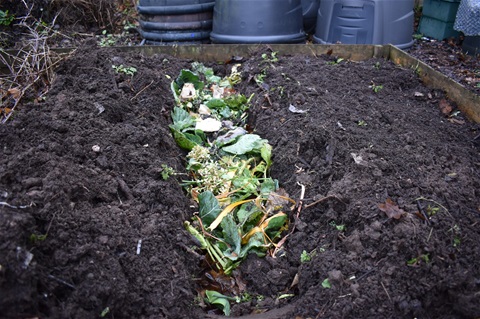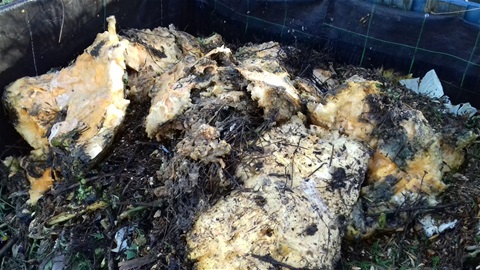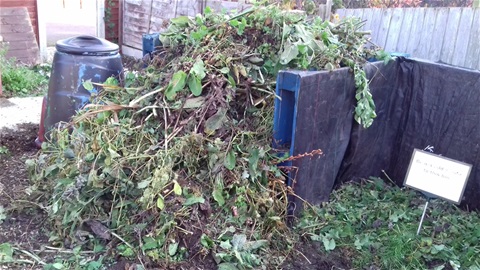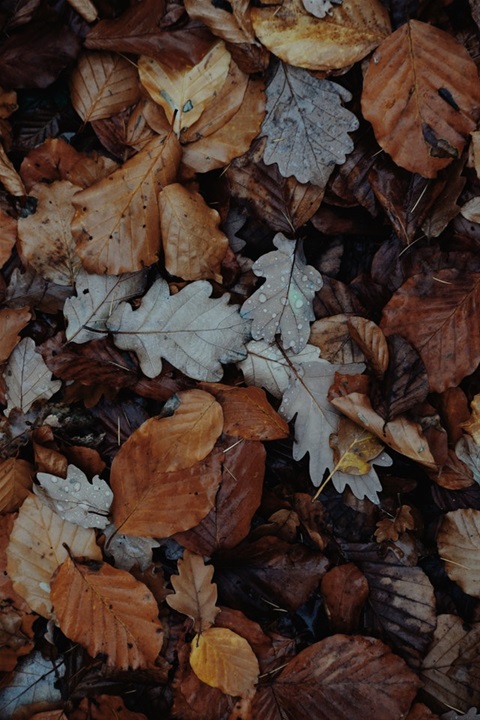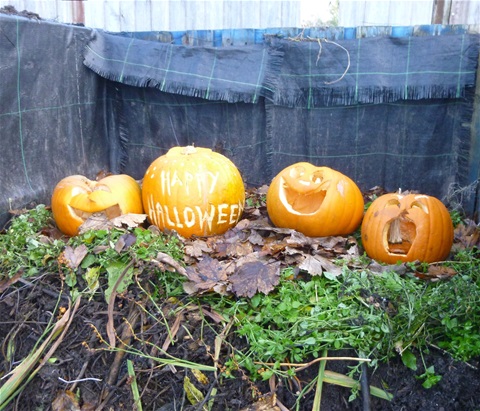No Compost bin or bin full ?
Make your garden and kitchen waste disappear by burying it in a trench pit or post hole. It is easy to compost your kitchen or garden waste over the winter using a:
- Trench where you want to grow next year’s runner beans. Start adding the waste at one end of the trench covering it with the soil as it is added. Some people dig a deeper trench so that a second layer of waste can be added but this will depend on the quantities of waste available and the number of rows of beans to be grown. When the waste has been covered the soil is likely to have made a small mound along the length of the trench, but this will settle by the time of planting.
- Pit (or pits) where it is planned to grow marrows or squashes and
- Post holes amongst permanent planting to give the ground an additional boost digging holes where space allows in the garden. At the simplest level, a spade or post hole digger can be used to make an 8-12" deep hole, the width of the hole can be varied to suit the volume of waste which should be buried at least 4" deep below the surface. Deeper if there are large creatures likely to dig it up.
The “chop and drop” method simply involves chopping the waste into small pieces with a spade, digging a post-hole in the garden, dropping the waste into the hole, giving it a final chop in situ, and covering with soil. It is sensible to mark the spot with a small stake when rotating the sites round the garden. If using fresh green garden waste, it can be covered with a layer of straw before the soil is replaced to help retain more of the nitrogen.
Usually when making a larger temporary pit a hole is dug to a depth of about twelve inches or for ease of working this may be one spit (the length of the spade blade).The size of the hole may be about three feet wide or be varied depending on the quantity of waste available for composting. In a temporary pit a 3-4-inch mixed layer of organic material is added to the bottom of the pit. If vegetable gardening in rows it may be helpful to make the pit the same width as the row normally used.
More details at http://www.carryoncomposting.com/443725787
